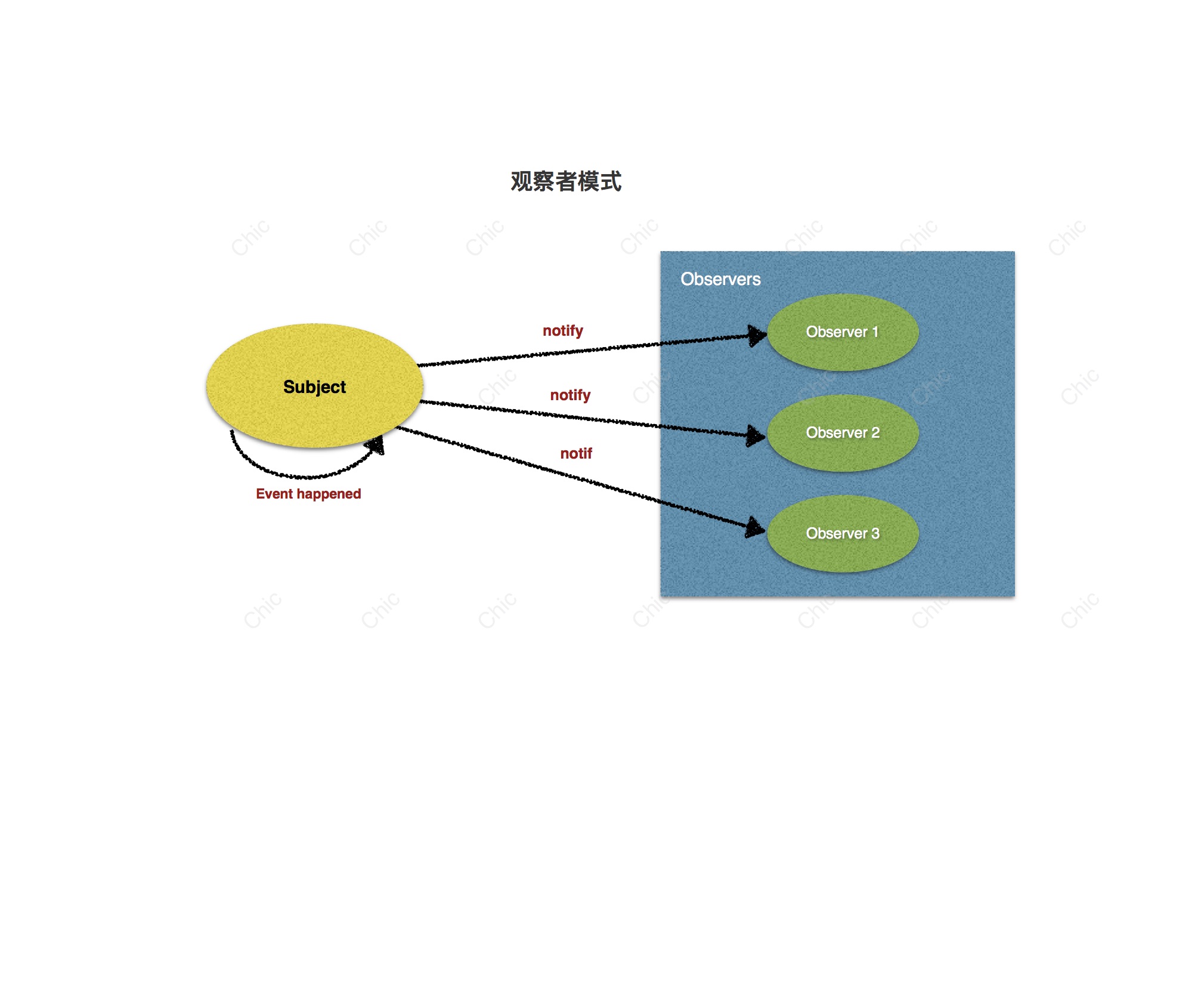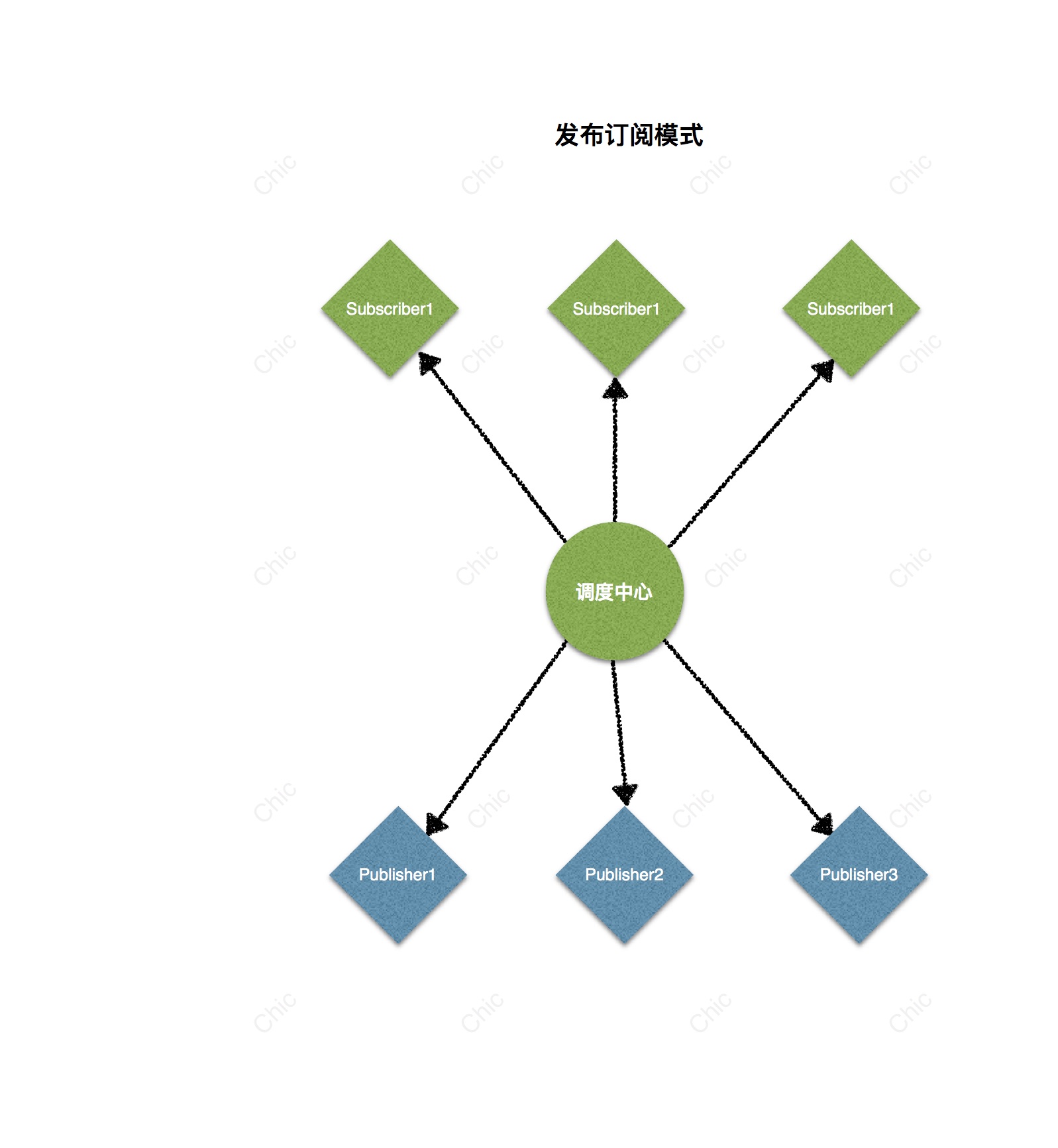好多设计模式的书上说观察者模式又叫发布订阅模式,但是在面试的时候有的面试官却问两者有什么区别?那么非要说区别的话,就从基本的流程图上分析分析;
观察者模式
一个称为subject 的对象维系着一系列关注着它的对象(称为observer),一旦subject状态发生改变就会通知这一系列的观察者对象们。这是一种一对多的模式。
发布/订阅模式
存在着这样一个中央控制中心,作为发布者的你,可以通过控制中心发消息给你的订阅者。发布者和订阅者之间没有联系。这是一种多对多的模式。
来看下二种模式的分析图: 代码实现: 1 2 3 4 5 6 7 8 9 10 11 12 13 14 15 16 17 18 19 20 21 22 23 24 25 26 27 28 29 30 31 32 33 34 35 36 37 38 39 40 41 42 43 44 45 46 47 48 49 50 51 52 53 54 55 56 57 58 59 60 61 62 63 64 65 66 67 68 69 70 71 72 73 74 75 76 77 78 79 80 81 82 83 84 85 86 87 88 89 90 91 92 93 94 95 96 97 98 99 100 101 102 103 104 class Observer constructor (subject) { this .subject = subject; } update (message) { console .log(`订阅${this .subject} 主题的客户:${message} ` ); } } class Subject constructor () { this .subjects = {}; } add(observer) { let subject = observer.subject; if (!this .subjects[subject]) { this .subjects[subject] = []; } this .subjects[subject].push(observer); } remove(subject, observer) { this .subjects[subject].forEach((item, index ) => { if (item === observer) { this .subjects[subject].splice(index, 1 ); } }) } notify(subject, message) { this .subjects[subject].forEach((item ) => { item.update(message); }) } } const observer1 = new Observer('雷佳音' );const observer2 = new Observer('雷佳音' );const observer3 = new Observer('雷佳音' );const observer4 = new Observer('张艺兴' );const observer5 = new Observer('张艺兴' );const observer6 = new Observer('张艺兴' );const observer7 = new Observer('张艺兴' );const observer8 = new Observer('鹿晗' );const subject = new Subject();subject.add(observer1); subject.add(observer2); subject.add(observer3); subject.add(observer4); subject.add(observer5); subject.add(observer6); subject.add(observer7); subject.add(observer8); subject.notify('雷佳音' , '你有新消息了,请及时查看!' ); subject.notify('张艺兴' , '你有新消息了,请及时查看!' ); subject.notify('鹿晗' , '你有新消息了,请及时查看!' ); class EventBus constructor () { this .subjects = {}; } on(subject, callback) { if (!this .subjects[subject]) { this .subjects[subject] = []; } this .subjects[subject].push(callback); } off(subject, callback = null ) { if (callback === null ) { this .subjects[subject] = []; } else { this .subjects[subject].forEach((item, index ) => { if (item === callback) { this .subjects[subject].splice(index, 1 ); } }) } } emit(subject, data = null ) { this .subjects[subject].forEach((item ) => item(data)); } } const people = function (val ) console .log(`生日礼物我收到啦, 是${val.gistName} ,我非常喜欢,谢谢你!` ); }; const bus = new EventBus();bus.on('newItem' , people); const gift = { gistName: '可爱熊' }; bus.emit('newItem' , gift);
二者之间的区别总结如下:
在观察者模式 中,观察者是知道Subject的,Subject一直保持对观察者进行记录。然而,在发布订阅模式 中,发布者和订阅者不知道对方的存在。它们只有通过消息代理进行通信。
在发布订阅模式 中,组件是松散耦合的,正好和观察者模式相反。
观察者模式 大多数时候是同步的,比如当事件触发,Subject就会去调用观察者的方法。而发布-订阅模式大多数时候是异步的(使用消息队列)。
观察者模式 需要在单个应用程序地址空间中实现,而发布-订阅更像交叉应用模式。
尽管它们之间有区别,但有些人可能会说发布-订阅模式是观察者模式的变异,因为它们概念上是相似的。
大概这些,over。

